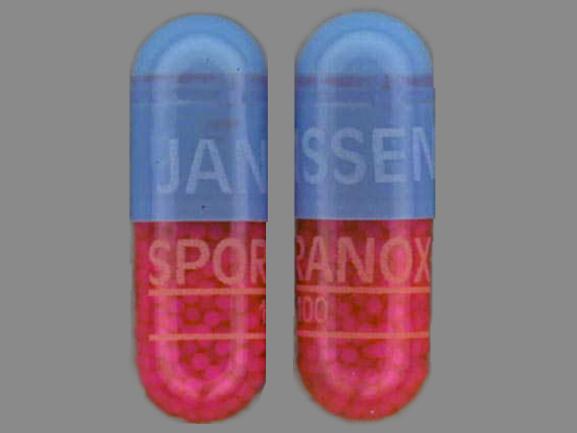Sporanox Dosage
Generic name: ITRACONAZOLE 10mg in 1mL
Dosage form: oral solution
Drug class: Azole antifungals
Medically reviewed by Drugs.com. Last updated on Mar 7, 2024.
Treatment of Oropharyngeal and Esophageal Candidiasis
The solution should be vigorously swished in the mouth (10 mL at a time) for several seconds and swallowed.
The recommended dosage of SPORANOX ®(itraconazole) Oral Solution for oropharyngeal candidiasis is 200 mg (20 mL) daily for 1 to 2 weeks. Clinical signs and symptoms of oropharyngeal candidiasis generally resolve within several days.
For patients with oropharyngeal candidiasis unresponsive/refractory to treatment with fluconazole tablets, the recommended dose is 100 mg (10 mL) b.i.d. For patients responding to therapy, clinical response will be seen in 2 to 4 weeks. Patients may be expected to relapse shortly after discontinuing therapy. Limited data on the safety of long-term use (>6 months) of SPORANOX ®Oral Solution are available at this time.
The recommended dosage of SPORANOX ®Oral Solution for esophageal candidiasis is 100 mg (10 mL) daily for a minimum treatment of three weeks. Treatment should continue for 2 weeks following resolution of symptoms. Doses up to 200 mg (20 mL) per day may be used based on medical judgment of the patient's response to therapy.
SPORANOX ®Oral Solution and SPORANOX ®Capsules should not be used interchangeably. Patients should be instructed to take SPORANOX ®Oral Solution without food, if possible. Only SPORANOX ®Oral Solution has been demonstrated effective for oral and/or esophageal candidiasis.
Use in Patients with Renal Impairment
Limited data are available on the use of oral itraconazole in patients with renal impairment. Caution should be exercised when this drug is administered in this patient population. (See CLINICAL PHARMACOLOGY: Special Populationsand PRECAUTIONS.)
Use in Patients with Hepatic Impairment
Limited data are available on the use of oral itraconazole in patients with hepatic impairment. Caution should be exercised when this drug is administered in this patient population. (See CLINICAL PHARMACOLOGY: Special Populations, WARNINGS, and PRECAUTIONS.)
Frequently asked questions
- How do I get rid of nail fungus?
- What is the difference between Tolsura and Sporanox?
- What home remedies work well for toenail fungus?
More about Sporanox (itraconazole)
- Check interactions
- Compare alternatives
- Pricing & coupons
- Reviews (19)
- Drug images
- Side effects
- During pregnancy
- Generic availability
- Drug class: azole antifungals
- Breastfeeding
- En español
Patient resources
Other brands
Professional resources
Other brands
Related treatment guides
Further information
Always consult your healthcare provider to ensure the information displayed on this page applies to your personal circumstances.

